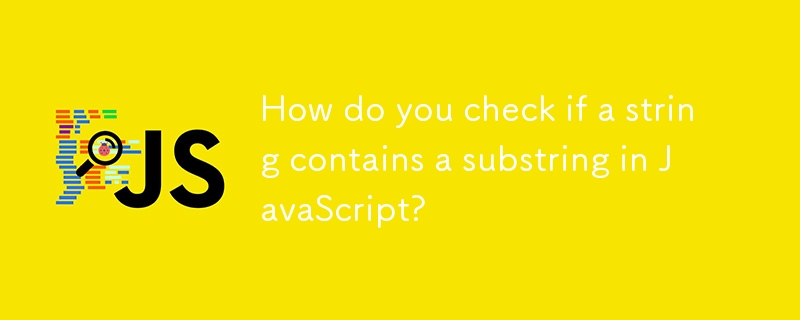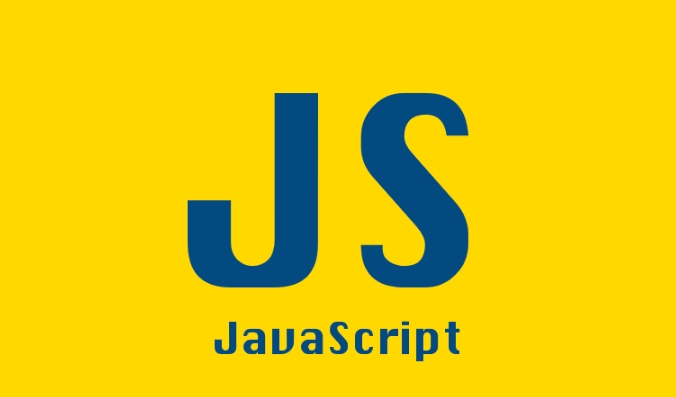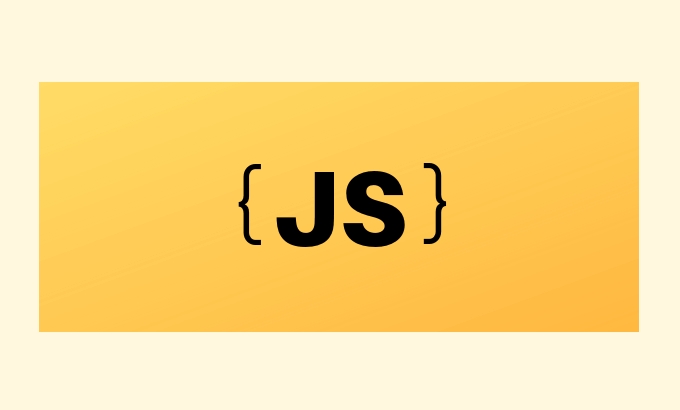How do you check if a string contains a substring in JavaScript?
Aug 02, 2025 am 02:09 AMUse include() method to directly determine whether a string contains a substring, return true or false, which is recommended for simple checking; 2. The indexOf() method returns the index value or -1, and needs to be used in conjunction with the use of not equal to -1; 3. The search() method supports regular expressions, suitable for scenarios that require regular matching, but only returns the first matching position; 4. The test() method is suitable for complex pattern matching, with high flexibility but too complex for simple requirements; in summary, for ordinary substring searches, include() is the clearest and efficient choice, while regular related methods are suitable for situations where pattern matching is required. In the end, it is recommended to use include() method to complete basic inclusion checks first.

You can check if a string contains a substring in JavaScript using several methods. Here are the most common and practical ones:

1. includes() method (Recommended for simple checks)
The includes() method is the most straightforward and readable way to check for a substring. It returns true if the substring is found, and false otherwise.
const str = "Hello, world!";
console.log(str.includes("world")); // true
console.log(str.includes("JavaScript")); // falseIt's case-sensitive, so:

console.log(str.includes("World")); // falseIf you need case-insensitive search, convert both strings to lowercase:
const searchString = "WORLD"; console.log(str.toLowerCase().includes(searchString.toLowerCase())); // true
2. indexOf() method
This method returns the index of the first occurrence of the substring, or -1 if not found. You can use it in a boolean context.

const str = "Hello, world!";
console.log(str.indexOf("world") !== -1); // true
console.log(str.indexOf("JavaScript") !== -1); // false Like includes() , it's also case-sensitive.
3. Using search() with regular expressions
The search() method takes a regular expression and returns the index of the match, or -1 if not found.
const str = "Hello, world!";
console.log(str.search("world") !== -1); // trueIt's useful when you want to use regex patterns:
// Case-insensitive search using regex console.log(str.search(/WORLD/i) !== -1); // true
But note: search() doesn't support global flags like g , and it always returns the first match.
4. Using regular expressions with test()
For more complex pattern matching, you can use RegExp.prototype.test() .
const str = "Hello, world!"; const regex = /world/; console.log(regex.test(str)); // true
This is powerful when you need pattern matching (eg, word boundaries, wildcards), but overkill for simple substring checks.
Quick comparison:
| Method | Case-sensitive | Regex support | Easy to use? |
|---|---|---|---|
includes()
|
Yes | No | ? Yes |
indexOf()
|
Yes | No | ? Yes |
search()
|
Yes (unless i flag) |
Yes | ?? Medium |
test()
|
Depends on regex | Yes | ?? Medium |
For most cases, use includes() — it's clean, readable, and built for this exact purpose. Use regex-based methods only when you need pattern matching.
Basically, if you're just checking whether one string is inside another, includes() is your best bet.
The above is the detailed content of How do you check if a string contains a substring in JavaScript?. For more information, please follow other related articles on the PHP Chinese website!

Hot AI Tools

Undress AI Tool
Undress images for free

Undresser.AI Undress
AI-powered app for creating realistic nude photos

AI Clothes Remover
Online AI tool for removing clothes from photos.

Clothoff.io
AI clothes remover

Video Face Swap
Swap faces in any video effortlessly with our completely free AI face swap tool!

Hot Article

Hot Tools

Notepad++7.3.1
Easy-to-use and free code editor

SublimeText3 Chinese version
Chinese version, very easy to use

Zend Studio 13.0.1
Powerful PHP integrated development environment

Dreamweaver CS6
Visual web development tools

SublimeText3 Mac version
God-level code editing software (SublimeText3)

Hot Topics
 How to repeat a string in python_python repeating string tutorial
Apr 02, 2024 pm 03:58 PM
How to repeat a string in python_python repeating string tutorial
Apr 02, 2024 pm 03:58 PM
1. First open pycharm and enter the pycharm homepage. 2. Then create a new python script, right-click - click new - click pythonfile. 3. Enter a string, code: s="-". 4. Then you need to repeat the symbols in the string 20 times, code: s1=s*20. 5. Enter the print output code, code: print(s1). 6. Finally run the script and you will see our return value at the bottom: - repeated 20 times.
 How to determine whether a Golang string ends with a specified character
Mar 12, 2024 pm 04:48 PM
How to determine whether a Golang string ends with a specified character
Mar 12, 2024 pm 04:48 PM
Title: How to determine whether a string ends with a specific character in Golang. In the Go language, sometimes we need to determine whether a string ends with a specific character. This is very common when processing strings. This article will introduce how to use the Go language to implement this function, and provide code examples for your reference. First, let's take a look at how to determine whether a string ends with a specified character in Golang. The characters in a string in Golang can be obtained through indexing, and the length of the string can be
 Detailed explanation of the method of converting int type to string in PHP
Mar 26, 2024 am 11:45 AM
Detailed explanation of the method of converting int type to string in PHP
Mar 26, 2024 am 11:45 AM
Detailed explanation of the method of converting int type to string in PHP In PHP development, we often encounter the need to convert int type to string type. This conversion can be achieved in a variety of ways. This article will introduce several common methods in detail, with specific code examples to help readers better understand. 1. Use PHP’s built-in function strval(). PHP provides a built-in function strval() that can convert variables of different types into string types. When we need to convert int type to string type,
 How to intercept a string in Go language
Mar 13, 2024 am 08:33 AM
How to intercept a string in Go language
Mar 13, 2024 am 08:33 AM
Go language is a powerful and flexible programming language that provides rich string processing functions, including string interception. In the Go language, we can use slices to intercept strings. Next, we will introduce in detail how to intercept strings in Go language, with specific code examples. 1. Use slicing to intercept a string. In the Go language, you can use slicing expressions to intercept a part of a string. The syntax of slice expression is as follows: slice:=str[start:end]where, s
 How to check if a string starts with a specific character in Golang?
Mar 12, 2024 pm 09:42 PM
How to check if a string starts with a specific character in Golang?
Mar 12, 2024 pm 09:42 PM
How to check if a string starts with a specific character in Golang? When programming in Golang, you often encounter situations where you need to check whether a string begins with a specific character. To meet this requirement, we can use the functions provided by the strings package in Golang to achieve this. Next, we will introduce in detail how to use Golang to check whether a string starts with a specific character, with specific code examples. In Golang, we can use HasPrefix from the strings package
 PHP String Matching Tips: Avoid Ambiguous Included Expressions
Feb 29, 2024 am 08:06 AM
PHP String Matching Tips: Avoid Ambiguous Included Expressions
Feb 29, 2024 am 08:06 AM
PHP String Matching Tips: Avoid Ambiguous Included Expressions In PHP development, string matching is a common task, usually used to find specific text content or to verify the format of input. However, sometimes we need to avoid using ambiguous inclusion expressions to ensure match accuracy. This article will introduce some techniques to avoid ambiguous inclusion expressions when doing string matching in PHP, and provide specific code examples. Use preg_match() function for exact matching In PHP, you can use preg_mat
 How to solve the problem of Chinese garbled characters when converting hexadecimal to string in PHP
Mar 04, 2024 am 09:36 AM
How to solve the problem of Chinese garbled characters when converting hexadecimal to string in PHP
Mar 04, 2024 am 09:36 AM
Methods to solve Chinese garbled characters when converting hexadecimal strings in PHP. In PHP programming, sometimes we encounter situations where we need to convert strings represented by hexadecimal into normal Chinese characters. However, in the process of this conversion, sometimes you will encounter the problem of Chinese garbled characters. This article will provide you with a method to solve the problem of Chinese garbled characters when converting hexadecimal to string in PHP, and give specific code examples. Use the hex2bin() function for hexadecimal conversion. PHP’s built-in hex2bin() function can convert 1
 Detailed explanation of Golang string modification: dynamic adjustment and variability
Apr 08, 2024 pm 03:27 PM
Detailed explanation of Golang string modification: dynamic adjustment and variability
Apr 08, 2024 pm 03:27 PM
Strings in GoLang, although immutable, can be dynamically modified using the following technique: concatenating strings using string concatenation. Create a new string using string formatting. Modify the underlying byte slice of the string. Use mutable string types provided by third-party libraries.






